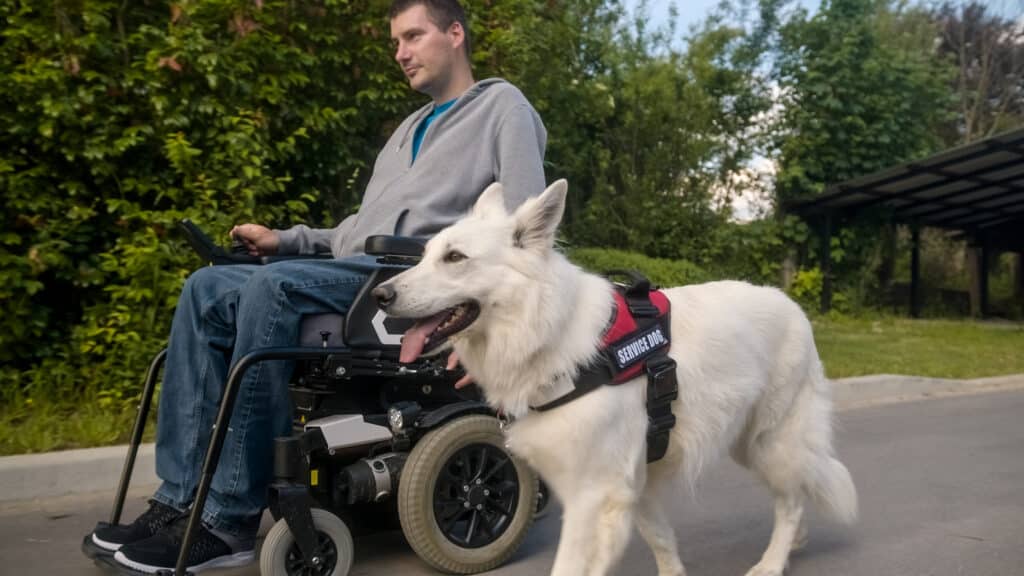
Cerebral Palsy (CP) is a neurological disorder that affects motor function and often presents with accompanying speech, cognitive, and behavioral challenges. While the exact cause of CP remains unknown, it is commonly attributed to brain damage before, during, or after birth and manifests in various forms and degrees of severity. Individuals with CP face numerous physical and emotional difficulties that can impact their quality of life and hinder their ability to engage in daily activities. In recent years, pet therapy has emerged as a promising holistic approach to help individuals with CP overcome some of these challenges by providing emotional support, physical stimulation, and the opportunity for social interaction. This article explores the benefits of pet therapy for individuals with Cerebral Palsy, shedding light on its potential role as a complementary therapy in their overall treatment plan.
Understanding Cerebral Palsy
Cerebral Palsy is a complex condition that affects movement and posture. It is characterized by impaired muscle control, coordination, and balance due to damage to one or more areas of the brain responsible for controlling motor functions. CP can manifest as spasticity, athetosis, or ataxia, and individuals may experience additional challenges such as communication difficulties, seizures, sensory impairments, and cognitive or behavioral issues. A multidisciplinary approach to treatment is often necessary, including physical therapy, occupational therapy, speech therapy, medication, and assistive devices. While these interventions are crucial, they do not address all aspects of the condition.
The Role of Pet Therapy
Pet therapy, also known as animal-assisted therapy (AAT), involves the introduction of specially trained animals, such as dogs, cats, and horses, into therapy sessions to help individuals achieve specific therapeutic goals. The presence of animals has been shown to have a positive impact on physical, emotional, and social well-being, making it an excellent complementary therapy for people with CP.
Physical Benefits:
One of the significant physical benefits of pet therapy for individuals with CP is the improvement in muscle strength and coordination. Interacting with animals requires gentle movements, such as petting, grooming, or throwing a ball, which can help exercise and stretch muscles. These activities also promote hand-eye coordination and fine motor skills, which are often impaired in individuals with CP. Additionally, engaging in walking or horseback riding exercises during pet therapy sessions can enhance balance, gait, and posture, contributing to improved mobility and independence.
Emotional Well-Being:
Living with a chronic condition like CP can often lead to feelings of isolation, frustration, and even depression. Pet therapy offers emotional support and companionship, providing a sense of comfort and unconditional love. Animal presence helps alleviate anxiety, reduce stress, and enhance overall mental well-being. Pets offer a non-judgmental and accepting relationship, creating a safe space for individuals with CP to express their emotions, build self-esteem, and develop a sense of empathy and compassion.
Social Interaction:
Many individuals with CP struggle with social interactions due to speech impairments or limited motor skills. Pet therapy creates opportunities for meaningful social connections. Animals serve as “ice-breakers” and can facilitate socialization by encouraging verbal and non-verbal communication. For example, individuals may initiate conversations about their pets, ask questions, or engage in activities together, fostering relationships and building friendships. This social interaction helps individuals with CP develop essential social skills, boosting their confidence and improving their overall quality of life.
Improved Communication Abilities:
Pet therapy can significantly benefit individuals with CP who face challenges in speech and communication. Animals have been found to be effective motivators for speech, as individuals may be more inclined to communicate when interacting with them. Talking to, giving commands, or reading aloud to animals can stimulate language development, improve articulation, and enhance vocabulary. Furthermore, assisting in grooming or feeding animals can encourage the use of fine motor skills required for tasks such as holding utensils or writing.
Sensory Stimulation:
Individuals with CP often experience sensory processing difficulties. Pet therapy offers sensory stimulation, which can be highly beneficial in improving sensory integration and sensitivity. Interacting with animals through touch, such as stroking their fur, feeling their heartbeat, or experiencing the vibrations when riding a horse, can help regulate sensory input. This sensory stimulation can contribute to improved body awareness, decreased hypersensitivity or hyposensitivity, and overall sensory integration.
AAT Modalities for Individuals with CP:
Animal-assisted therapy can be adapted to individuals with CP based on their unique needs and capabilities. Different modalities within pet therapy can address specific motor, sensory, or communication challenges. These modalities include:
1. Canine-Assisted Therapy:
Dogs, known for their loyalty and calm demeanor, can serve as companions and therapy animals for individuals with CP. Dogs can engage in various activities such as fetching, balancing, or assisting in physical therapy exercises. They can also be trained to provide emotional support, perform specific tasks, and assist in daily routines. The presence of a dog can create a structured and predictable environment, which can be particularly beneficial for individuals with CP who benefit from the routine.
2. Equine-Assisted Therapy:
Horseback riding, also known as hippotherapy, has proven to be highly effective in improving motor function, balance, and coordination in individuals with CP. The horse’s rhythmic movement stimulates postural control reactions and proprioceptive input, positively impacting muscle tone and overall motor skills. Equine-assisted therapy also provides individuals with CP the opportunity to engage in activities such as grooming, tacking, or feeding horses, fostering a sense of responsibility and independence.
3. Feline-Assisted Therapy:
The calming presence of cats can be beneficial for individuals with CP who experience anxiety or heightened arousal. Cats are known for their soothing effect, and simply petting or observing cats can promote a sense of relaxation and stress reduction. Cats can also be trained to assist individuals with CP in activities of daily living, such as turning on lights or fetching items.
4. Small Animal-Assisted Therapy:
Small pets like rabbits, guinea pigs, or hamsters can be involved in therapy sessions to provide tactile experiences and sensory stimulation. The gentle touch and soft fur of these animals can help individuals with CP regulate their sensory input, enhance fine motor skills, and develop a nurturing attitude.
Safety Considerations:
While pet therapy offers numerous benefits, it is essential to consider safety measures to ensure the well-being of both individuals with CP and the animals involved. The therapy animals should be well-trained and screened to ensure they are suitable for the specific needs of individuals with CP. Additionally, hygiene practices and infection control measures must be followed to prevent any health risks associated with animal contact. Careful consideration should be given to individual allergies or phobias, and the therapy sessions should be monitored by trained professionals to ensure a safe and positive experience for everyone involved.
Pet therapy offers a unique and holistic approach to treating individuals with Cerebral Palsy. The physical, emotional, and social benefits derived from the interaction with therapy animals can significantly improve the overall quality of life for individuals with CP. From improving muscle strength and coordination to providing emotional support and fostering social interactions, pet therapy holds great potential as an empowering and effective complementary therapy for individuals with CP. As further research is conducted in this field, it is important to continue promoting inclusivity and exploring innovative therapies that cater to the diverse needs of individuals with CP.



